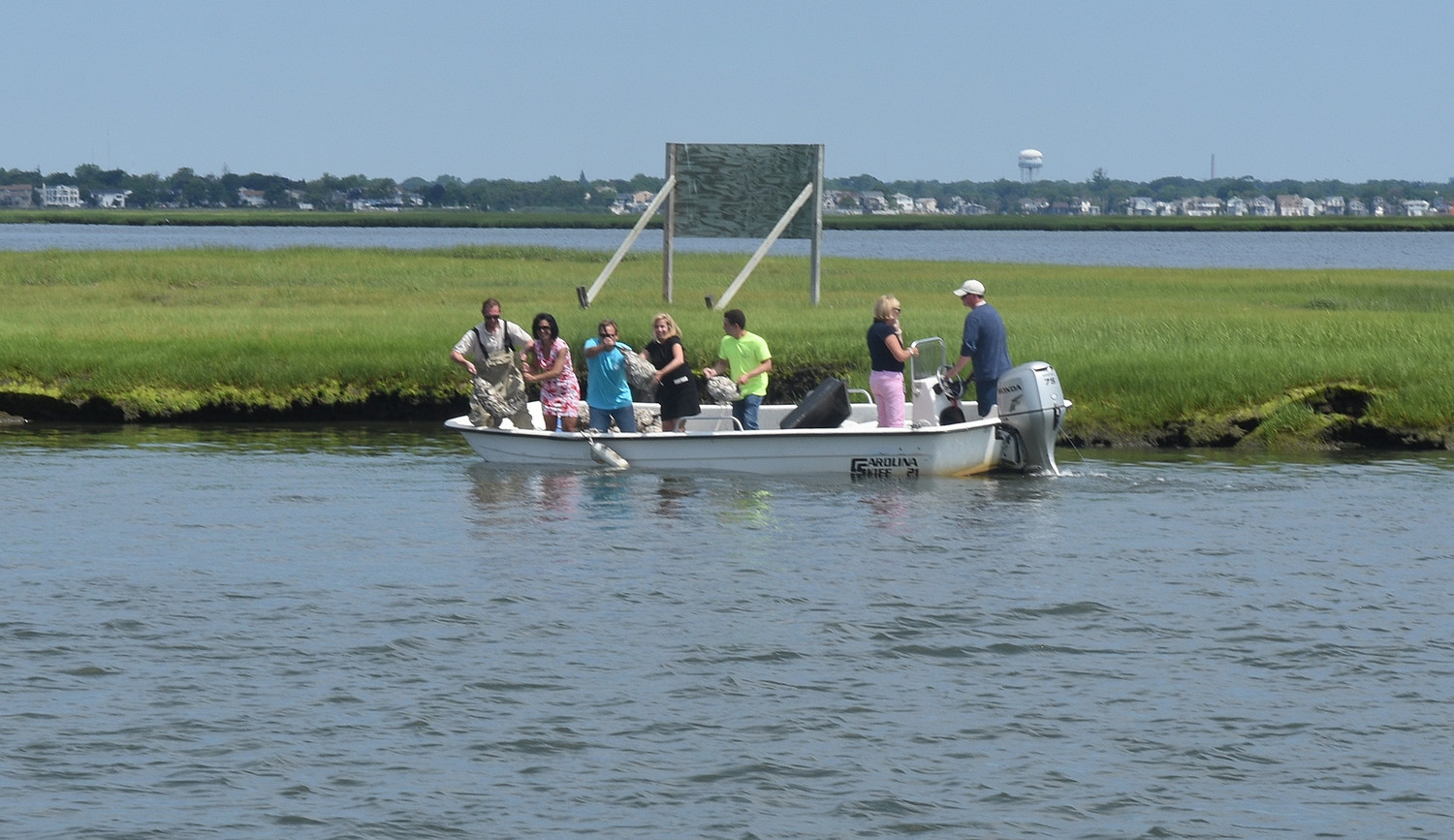Building a reef with seafood shells
Hempstead Town officials and environmentalists launched a living barrier reef composed of tens of thousands of discarded clam and oyster shells from nearby seafood restaurants near Long Meadow Island off the coast of Lido Beach on July 12.
Hempstead Town Supervisor Laura Gillen, along with State Sen. Todd Kaminsky, town officials and environmentalists, submerged hundreds of mesh bags containing the shells into the water to restore what serves as a natural defense against coastal storm surges.
“The devastation caused by Superstorm Sandy and the risks posed by climate change and sea-level rise justify bold actions,” Gillen said in a statement. “We are dramatically improving coastal resiliency along the South Shore by fortifying and restoring these natural barrier islands to levels not seen in decades.”
The reefs that form on the barrier islands protect South Shore residents from storm inundation when disasters like Sandy hit. The living reefs will link together with pre-existing ones in Baldwin Bay, Black Banks and Mill River and will span more than half a mile.
“Artificial reefs act as a nursery grounds and habitat for shellfish, fin fish and critically needed seagrass,” said Adrienne Esposito, Director of Citizens Campaign for the Environment. “Long Islanders love living by the water and it’s our responsibility to restore this magnificent resource.”
Once the shells settle on the sea floor, the reef structure will begin to fill with various species of marine life and eventually will create a habitat similar to a natural reef.
The reefs also attract new sea life to support the region’s growing marine economy, town officials said, and help filtrate waters polluted by years of excess nitrogen from sewage and wastewater runoff. Excess nitrogen pollution has caused parts of the coastal marshland — which helps protects residents from storm surges — to degrade.
“Restoring flourishing aquatic life on Reynolds Channel is great for the environment and can help the local economy,” Kaminsky said in a statement.
“Not many may realize that these islands are responsible for protecting Long Island’s South Shore population centers,” Gillen said. “They protect thousands of homes and major roads from storm inundation and the full force of powerful storm waves. Added to this, the reefs will also attract new sea life to support our region’s growing marine and eco-tourism economy.”

 50.0°,
Overcast
50.0°,
Overcast 




